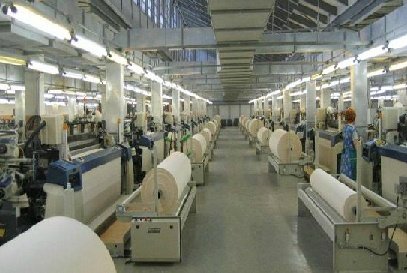
STAFF REPORT ISB: Pakistans industry particularly textile manufacturing-cum-exporting sector is in deep recession courtesy the persistent energy crisis, law and order situation and unfriendly investment opportunities, and requires immediate support from the government for resurrection.
This is also a fact that the countrys textile sector has a potential to meet not only the domestic requirements but also earn a substantial foreign exchange through enhanced exports. However, the energy shortfall coupled with uneven government policies has critically dampened its productivity besides layoffs of lakhs of workforce.
Exporters appeal to the government, Federal Commerce Ministry and Trade Development Authority of Pakistan to announce an emergency rescue plan to help recuperate the countrys industrial sector as the textile industry contributes approximately 46 per cent to the total output or 8.5 per cent of the country GDP.
According to the Pakistan Bureau of Statistics, the textile machinery import in May last went up by $15.657 million (38 per cent) to $57.244 million as compared to the machinery import of $41.587 million in May 2013, which is a good sign towards ensuring enhanced textile productivity. But again the question arises, whether the government-driven industrial policies are ensuring provision of a conducive environment for the industrial sector. With the existing industrial units are not properly receiving gas and power supplies, setting up of new businesses are unviable for investors.
According to Haroon Agar, President Karachi Chambers of Commerce and Industry, the overall investment in the industrial sector slowed down because of multiple reasons.
“The eenergy shortfall coupled with law and order situation in the business hub of Pakistan has deprived the business community of the confidence that they would recover their investment. Therefore, there was no expansion,” said Agar, who is an industrialist.
There are several challenges that the industry is facing subsequently lowering ratio of productivity and the profit as well. Due to electricity crisis, industry is not fulfilling the whole national demand and there is also reduction in the export ratio of cotton yarn or textile products to the international market. Also the production cost of textile industry is increasing with the Pakistani rupee devaluation against potent foreign currencies.
However, with the GSP Plus status Pakistan has a great opportunity to compete with China as it provides equal footing and level playing field.
At the same time, the Pakistani exporters with the effective patronage of government need to explore new world markets and fully participate in exhibitions held in different parts of the world. However, no tangible initiative has so far been taken in this regard which is not a good omen in terms of ensuring sustainability of the textiles sector.
“As when we look at all the European markets, departmental stores, and warehouses, Pakistan products are not found; it is flooded with Indian, Bangladeshi and Chinese goods. The basic reason is that the prices of Chinese goods are less than the goods of our country,” commented an exporter who had participated in the SAARC exhibition held in China last month.
Farrukh Hussain of Farrukh Engineering, a machinery retailer, said that due to low demand they are more into importing spare parts and components rather than the machinery.
An office bearer of the Pakistan Hosiery Manufacturers and Exporters Association said that how the manufacturing units in Karachi and Punjab could expand their size when everyday violence and worst electricity and gas shortages brought down their production capacity to 50 percent.
An official at the Trade Development Authority of Pakistan said that investors are ready to relocate their existing manufacturing setups to Bangladesh and elsewhere in the world if the present situation did not improve to help the businesses grow.